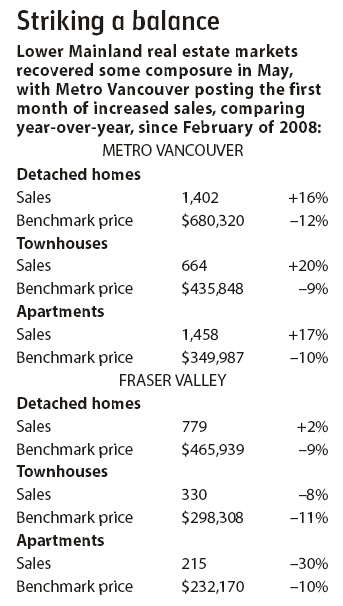Mia Stainsby
Sun

Owner Luis Montalvo is all smiles at El Barrio restaurant on East Hastings in Vancouver. Photograph by: Jenelle Schneider, Vancouver Sun
EL BARRIO RESTAURANTE LATINO
2270 East Hastings St., 604-569-2220.
www.elbarrio.ca
Restaurant visits are conducted anonymously and interviews are done by phone.
– – –
Translated, the name means “neighbourhood” and, from the looks of it, that’s what El Barrio Restaurante focuses on. Along with the Latin food, there’s salsa lessons and dancing, flamenco, open mike night, live music and local art for sale.
The food is a bit Mexican, Salvadorean and Cuban and a bit Montalvo, the last referring to the owner-chef Luis Montalvo who changes things a bit. “It’s my take on Latin food. It’s a little mixed up,” he says.
Montalvo has been in the restaurant industry since he came to Canada from El Salvador 23 years ago; his last job was as food and beverage director at the Hilton in Richmond.
When I visited, we were the only ones there. That’s when you thank god for music. The lively Latin music had the energy equivalence of at least eight people. We hardly noticed how lonely we were. Montalvo says the place tends to get busy around 8 p.m., whereas we wandered in around 7. Prices for starters range from $7.50 to $10; mains cost $14 to $16.
Things started off swimmingly. I was really pleased with the sopa Azteca made with a chicken and tomato broth and filled with vegetables. Tortilla strips jutted out of the soup bowl like wind-blown hair and circling the bowl were littler bowls of avocado pieces, queso duro (soft cheese) and chipotle paste to embellish the soup.
Tacos also pleased, with filling options of beef, chicken, house-made chorizo or fish of the day. The chorizos were a good choice.
If you’re dying for seafood, you might be out of luck, depending on the day’s reservations.
Montalvo likes to shop daily for the fish and if the evening looks like it’s going to be quiet, he’ll forgo the fish as the demand for seafood is low to begin with.
The day I called him, he’d bought Arctic char, enough for four servings.
But when I visited, the Catch of the Day was not available, I turned to chicken — pollo en mole — the mole reverberated with the flavour of Mexican chocolate and the chicken was tender and juicy. The rest of the dish matched the sides on my partner’s plate: sauteed peppers, rice and a smooth black bean puree.
“When I went to cooking school, it was the only Mexican recipe in the book,” he says of the pollo en mole. “I didn’t like it so I made it my own.”
He’d ordered what amounted to pulled beef (ropa vieja) which Montalvo borrowed from Cuba. Neither of us took to this dish. The pulled meat was too wet and the dish looked drab and unappealing.
Dessert suited us. The tres leche cake was made by poking holes into a tall vanilla cake and drizzling three milks — condensed, evaporated and whipped cream — into them. It’s light and not too sweet.
The beverage list didn’t feature any wines but he does carry some house wines if you ask. Hmm. Maybe best stick with a beer.
© Copyright (c) The Vancouver Sun






